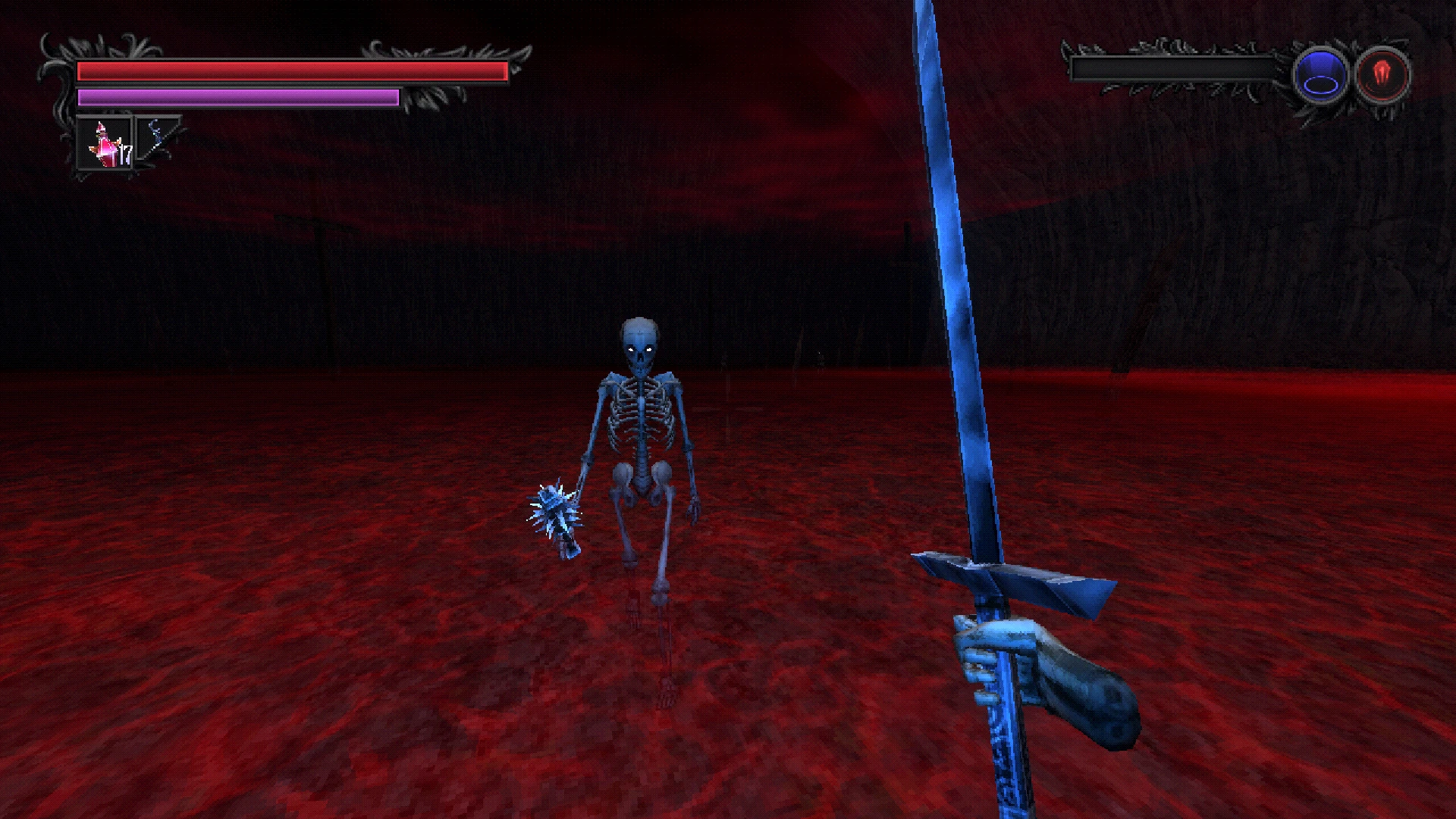[Review] Lunacid
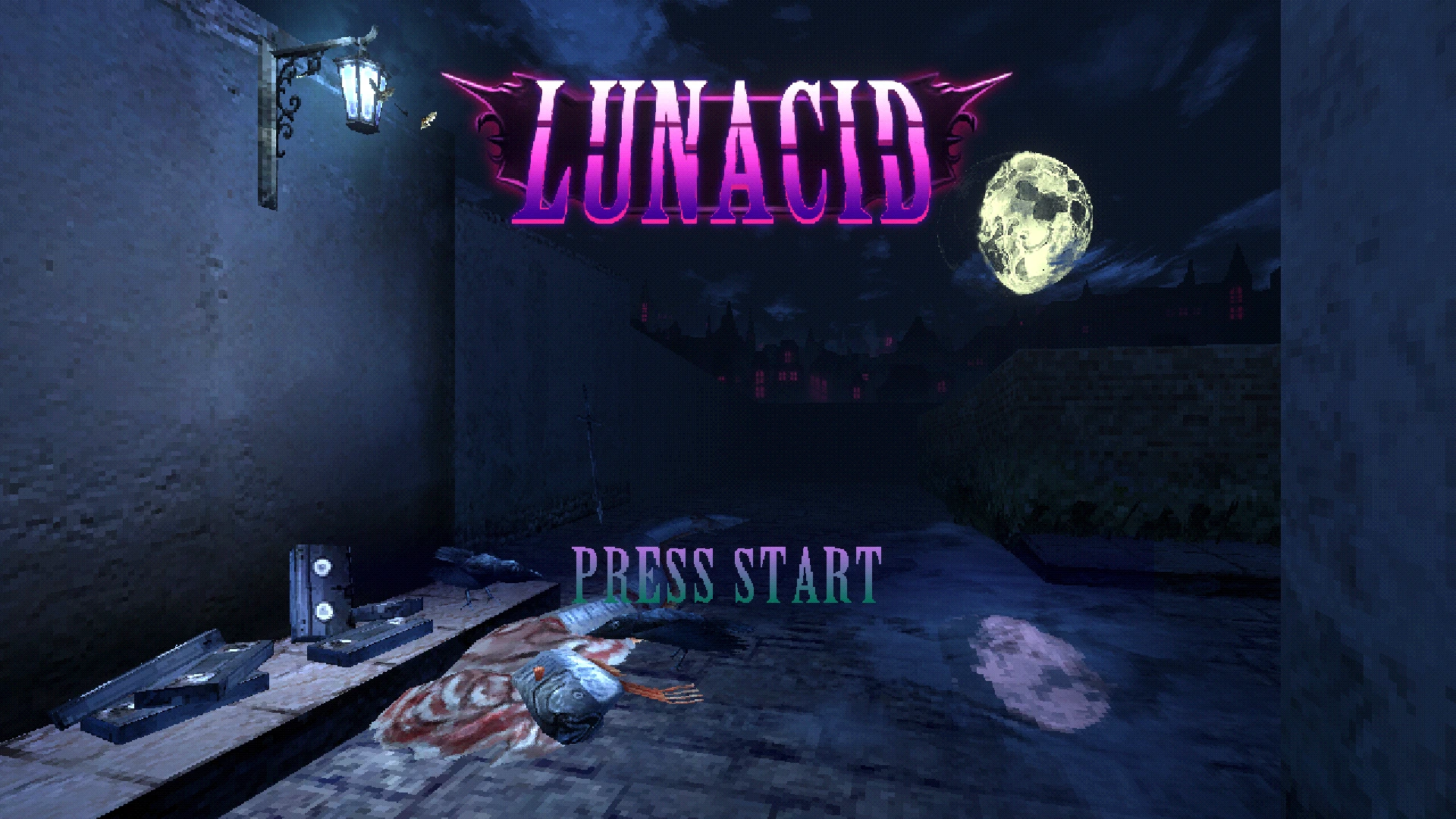
Are you in the know?
Coming shortly after FromSoft themselves resurrected a dormant IP, we have a spiritual successor to an even older IP of their's reaching its 1.0 full release; Lunacid by Kira LLC is a first-person dungeon crawler heavily inspired by the King's Field and Shadow Tower series (neither of which I've played, I must admit). With a purposely archaic visual style, tight and responsive gameplay, and an esoteric story of dreams and lost histories, there's a lot to sink one's teeth into...
Gameplay
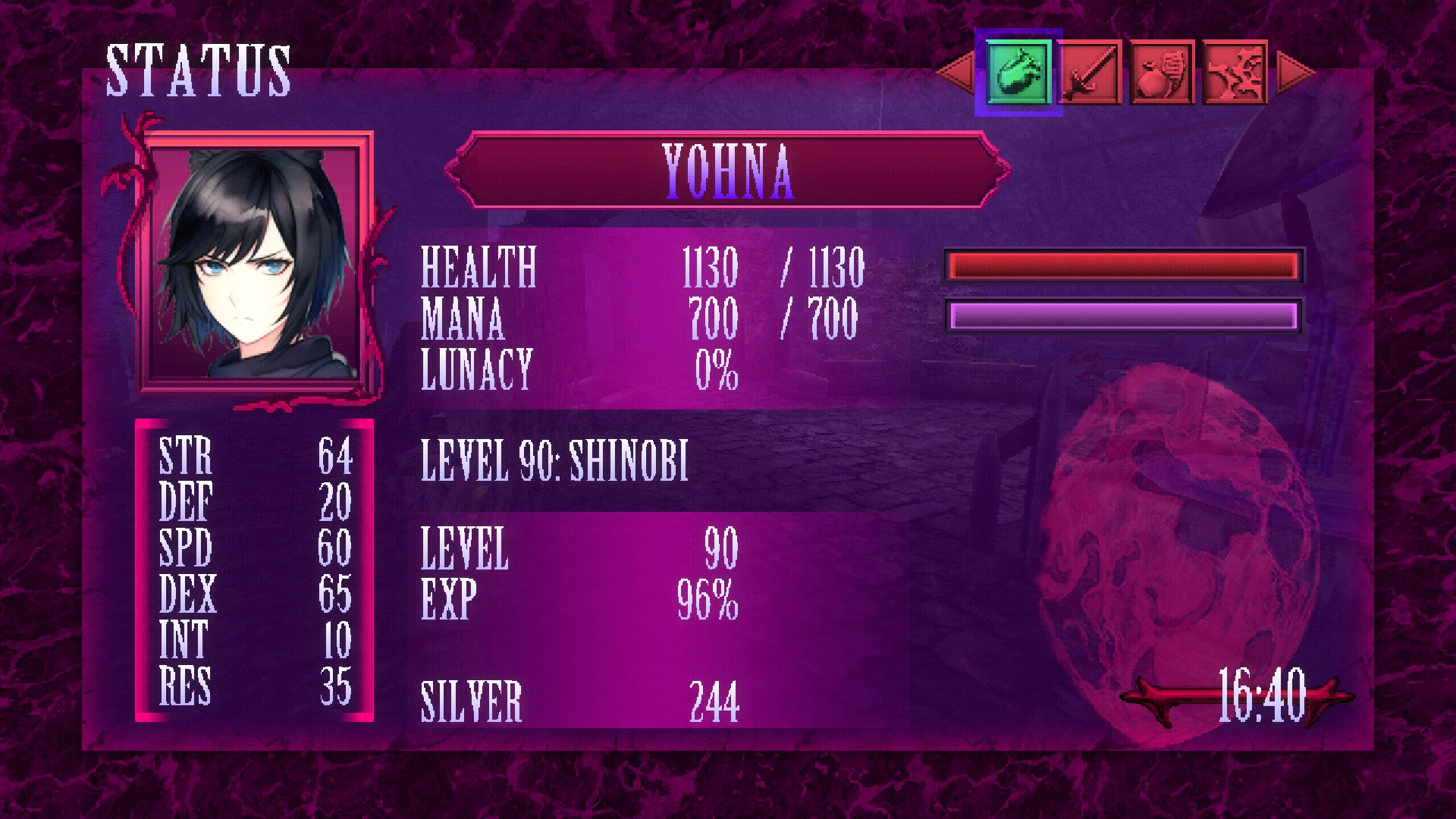
Each level up offers points which players may invest in their stats as they choose.
Lunacid is a surprisingly tight feeling game to play. While one might associate the first-person dungeon crawlers of old with slow and methodical gameplay (or outright clunky at worst), Lunacid is tight and responsive and even allows some fast and fluid movement almost akin to the likes of ol' Quake III, sans the rocket jumps at least. A variety of initial classes allows the player to start with a template for a certain style of play, and a levelling system which lets the player choose just what stats they want to increase really lets you refine just how you want your character to feel.
Players can equip two weapons and two spells at a time, and the variety for each is delightfully wide. Weapons range from simple but effective swords and crossbows to strange wands that fire a random element with each attack and a flail that basically attacks as fast as you can click. Meanwhile, spells can be simple attacks like flame spear, great utility like rock bridge or icarian flight, or even just outright absurd such as many of the bangers produced by the Mad Prophet Abdul like Lithomancy, a spell which serves no purpose other than to grant sentience to inanimate objects which then do nothing but scream.
Enemies are more often than not of the slower moving variety, which means the player will usually have the initiative in how they tackle them. The aforementioned fluid movement system means agile characters can opt to kite and play evasively, while blocking or simply investing a great deal in defence can let players really stay stuck in. Complimenting this is a dismemberment system which means limbs can be strategically targeted - weapon-wielding enemies can be made a whole lot less dangerous if you can lop off the arm that was holding it. That said, there is something of a lack of feedback from the enemies themselves when you hit them with even a heavy blow, with most enemies continuing towards you unflinchingly or only suffering a minor stagger at the loss of their limbs.
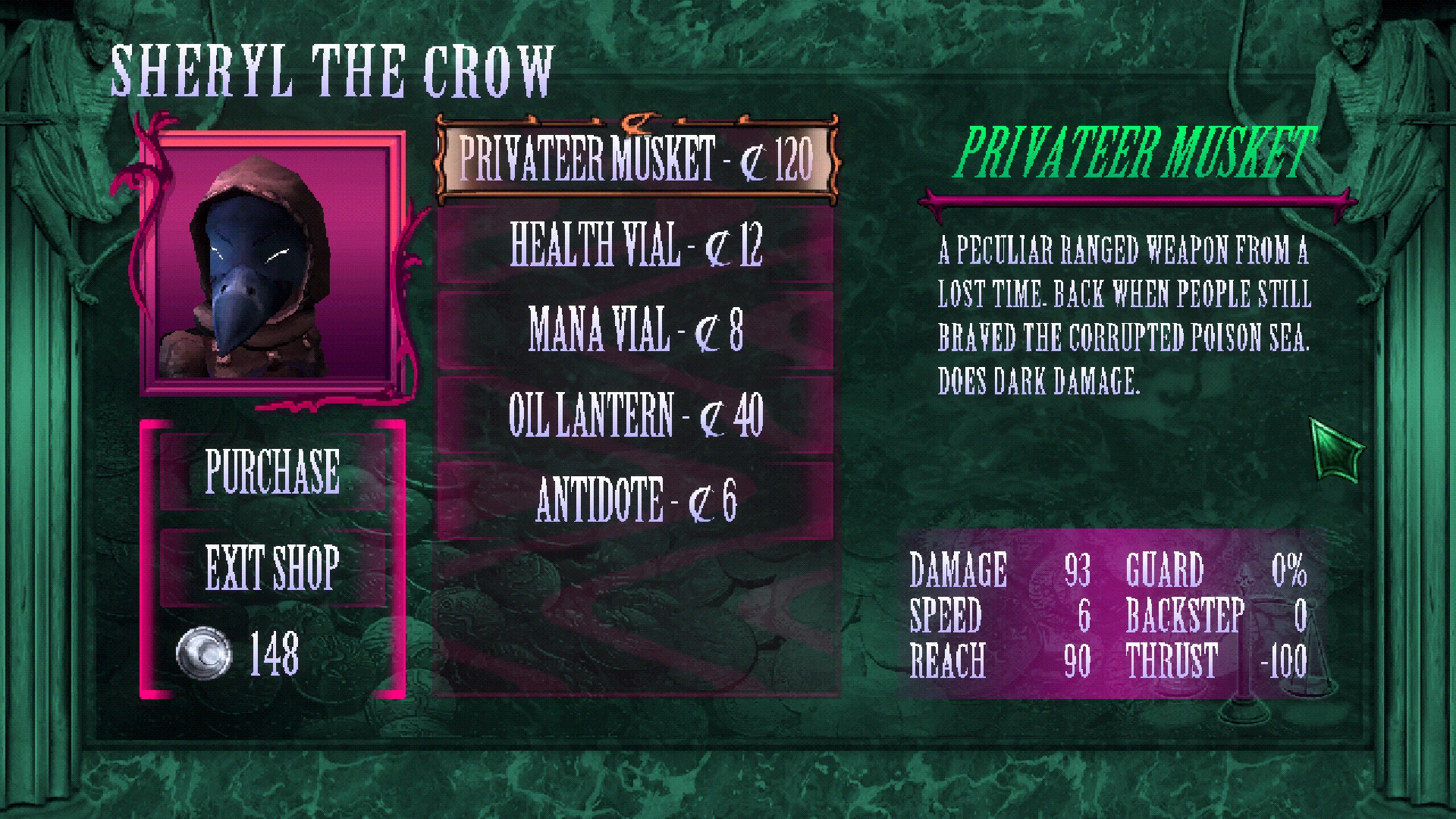
A number of NPCs offer services such as shopfronts and alchemy.
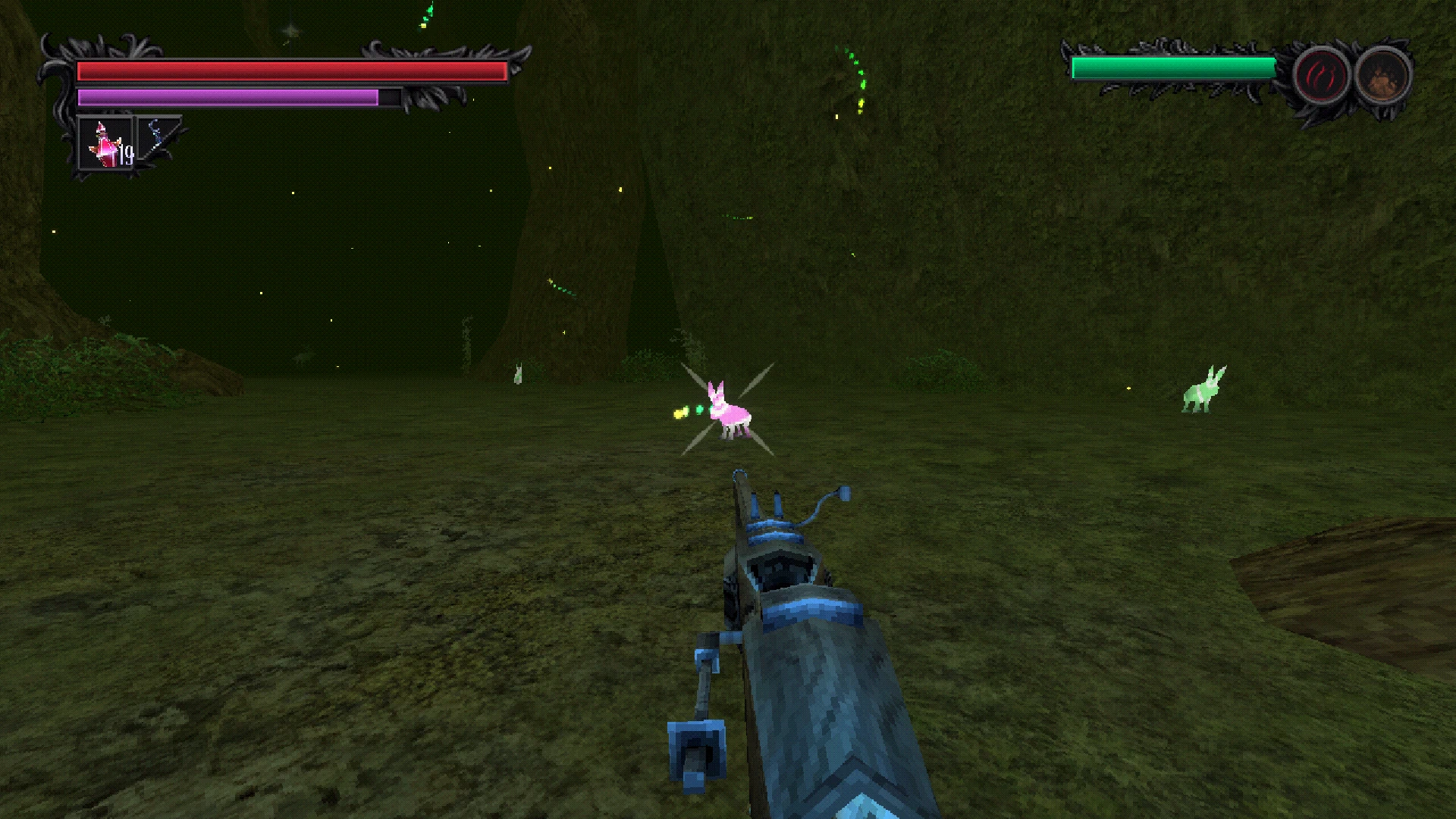
It's rabbit season.
Beyond combat, the world of the Great Well is has plenty to explore. Secret passages and hidden walls are plentiful, and paths off the beaten track can connect areas together in ways that you may not have expected. When puzzles make an appearance, they're generally not too obtruse (with the exception of maybe one or two, looking at you Secret Ballroom) and are pretty satisfying to resolve.
The area I have to criticize is the game's boss fights, of which there are only two. I feel both suffer from overly bloated HP pools that make the fights just drag on, and while the latter boss at least has decently engaging attack patterns that make you stay focused, the first boss was effortless for me beyond the time I had to spend whittling down their health. The mini-bosses throughout the game are decent at least owing to much more constrained health pools at least.
Story
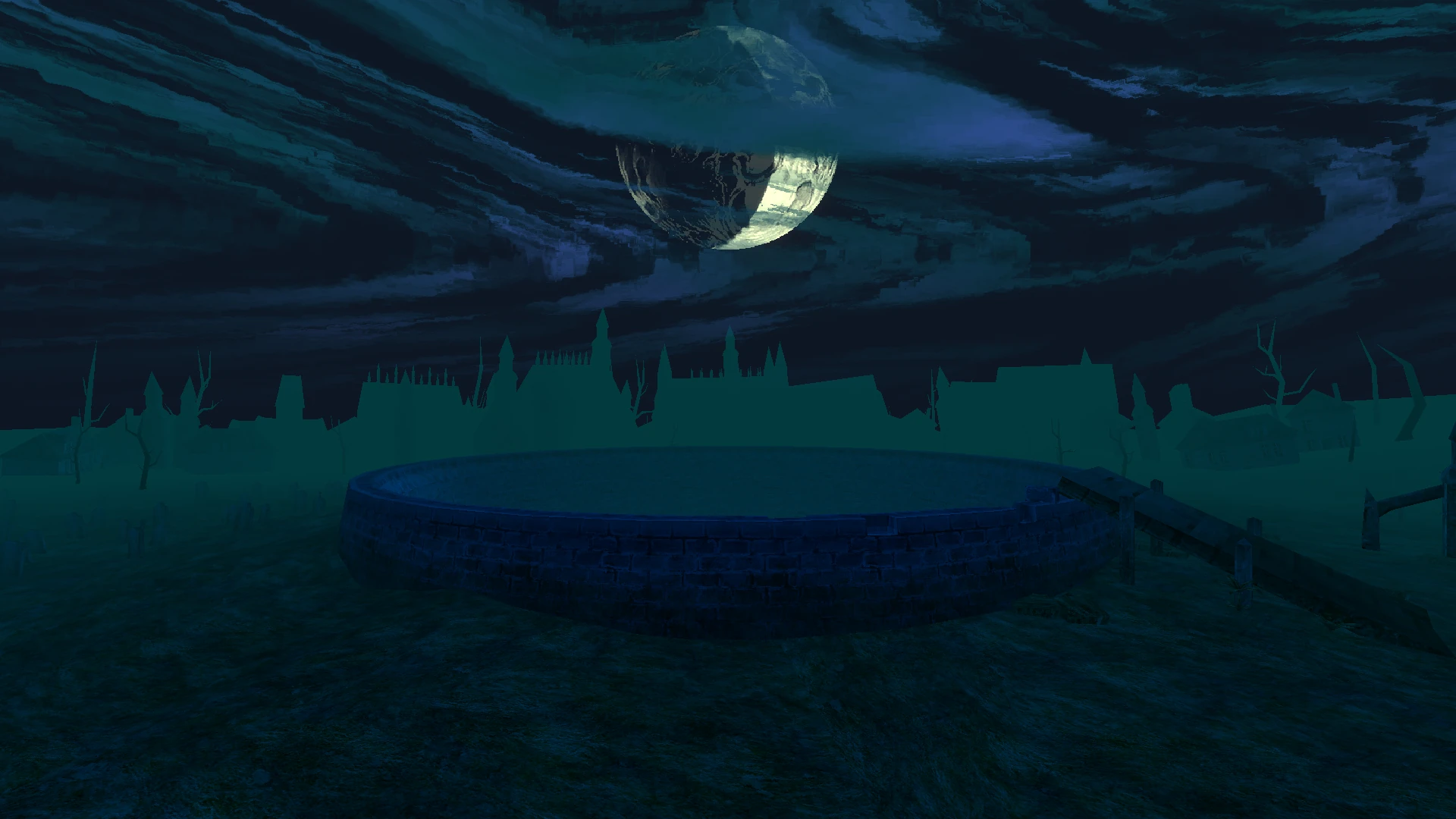
The Great Well serves as the final resting place of those scorned by the world above.
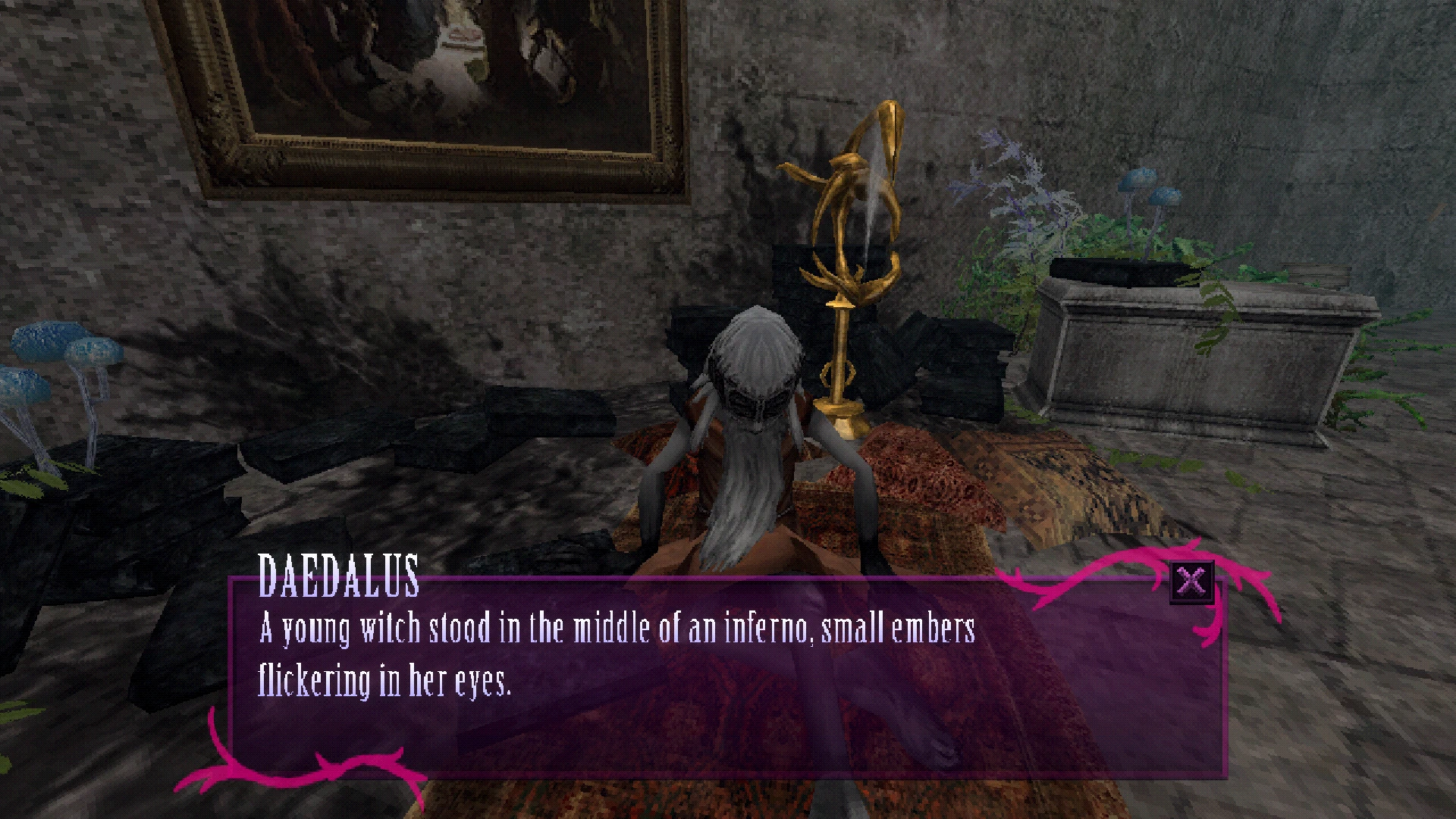
Stories and books throughout the world allow the player to slowly piece together the history of the worlds above and below.
Taking place in the far future of an apocalyptic event wherein a great creature of eld awoke from its slumber and bathed the world in a poisonous gas which destroyed society and reduced humanity to feudal kingdoms once more, Lunacid places the player in the shoes of a poor sod dumped into the Great Well, a massive abyss formed from another cataclysmic event which was prompty co-opted as a place to dump off ne'er-do-wells and other unwanted souls. Managing to survive the fall, the player takes up an abandoned blade and sets off to brave the depths of the Great Well...
The world of Lunacid is one of lost history, mystery, and eldritch machination. Much like many of FromSoft's releases, the game isn't entirely upfront about what its overall story is, but through stories told by NPCs, books and notes hidden throughout the world, and descriptions of items, the player can start to understand just how things came to be the way they are. The world building is pretty solid and absolutely the kind of setting I could see people adopting for their own homebrew RPG sessions.
Overall, I'm pretty positive on the story - it's a well realised world with some vibrant characters (though for many the actual amount of dialogue in the game can be a little thin, but it's the quality that matters I suppose) and compelling mysteries at its core, plus there's a few secret endings to pursue for those who want just that little bit more.
Visuals
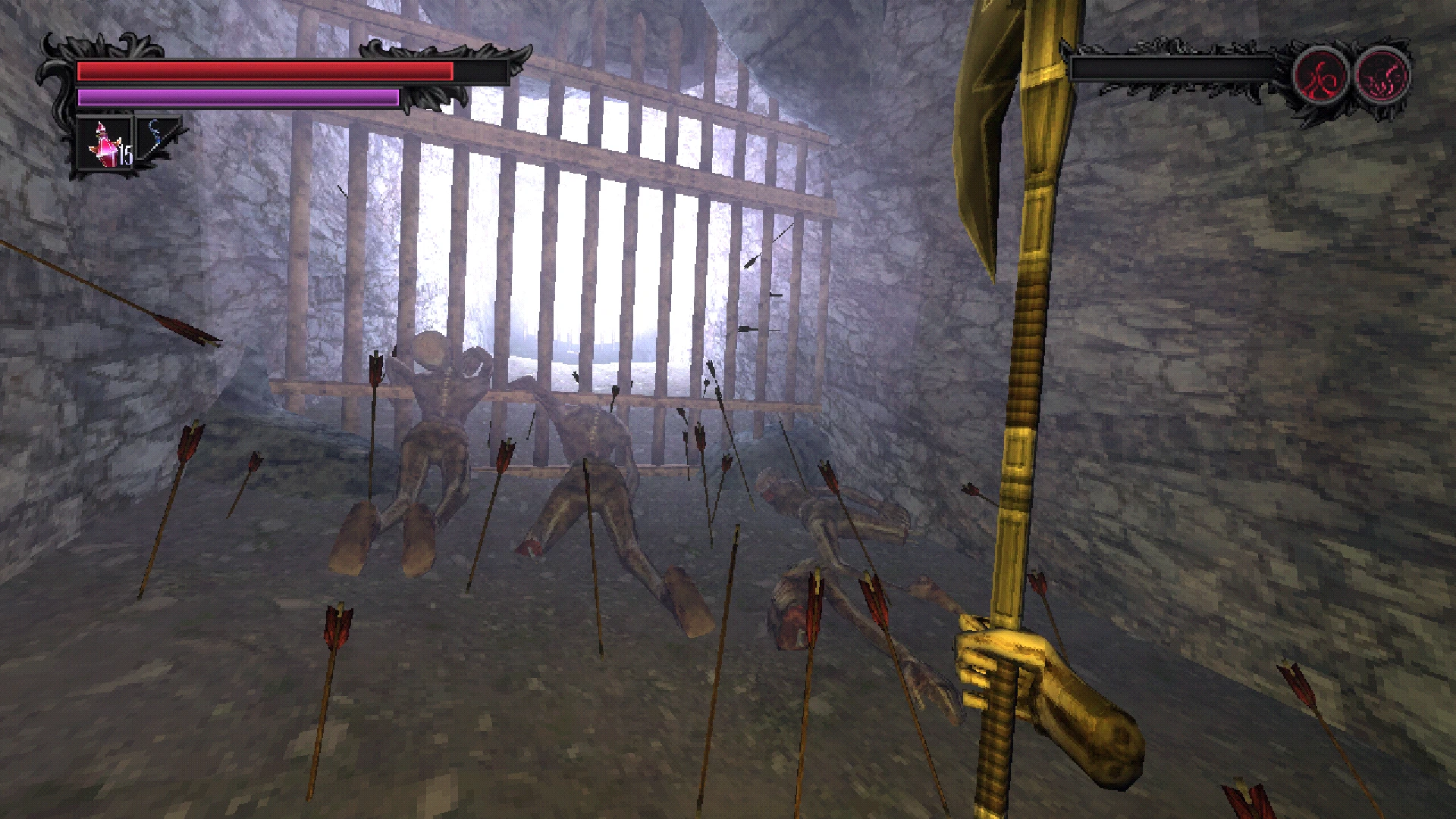
The Great Well Surface exists purely for atmosphere alone, and I appreciate it.
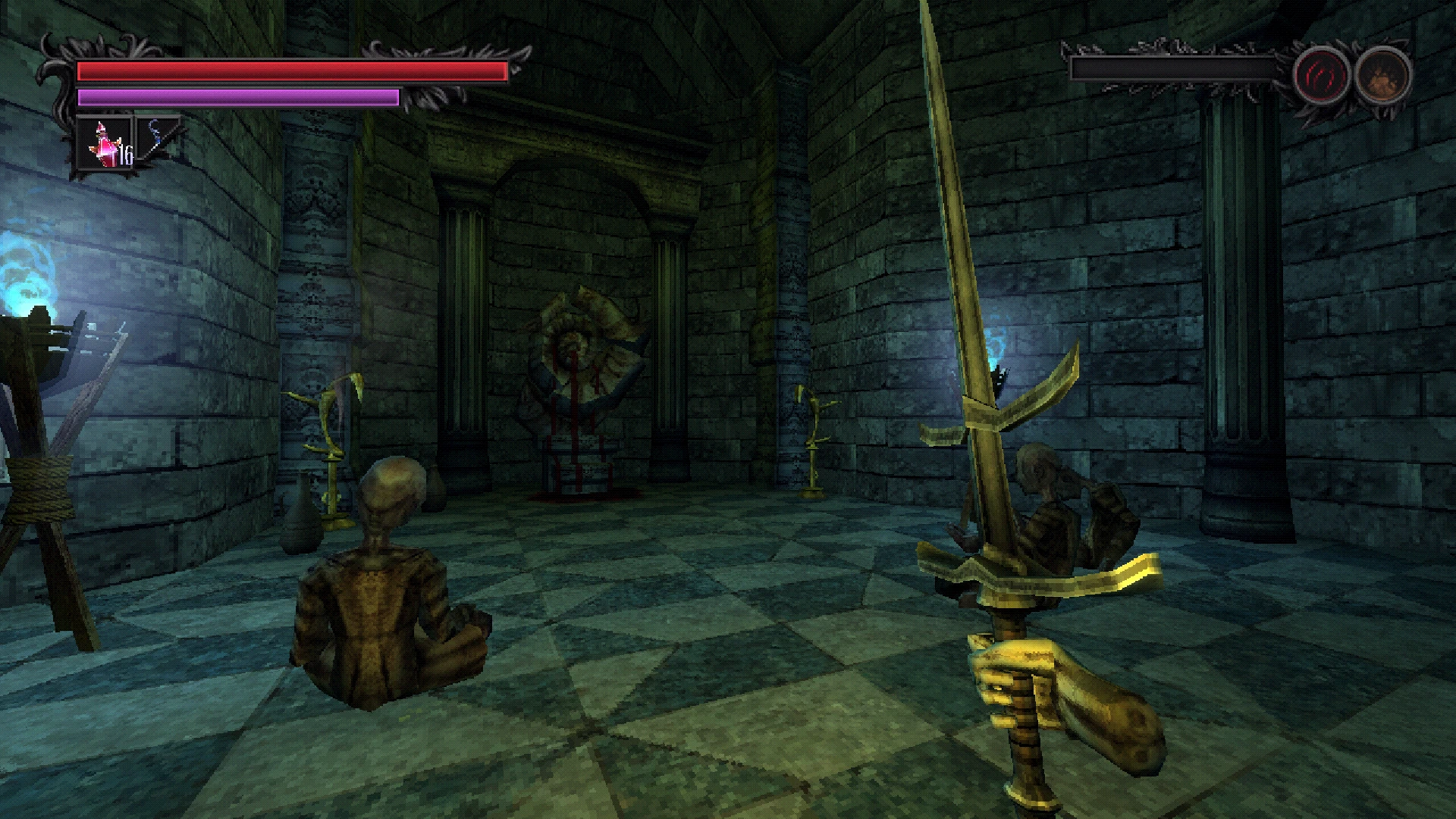
Even more conventional dungeon areas have their own stories to be uncovered.
Not content to take inspiration from the mechanics and thematics of its PS1 predecessors alone, Lunacid goes the whole way and strives to emulate the visuals of the era too. Achieving that low poly aesthetic can be quite a bit trickier than one might imagine, but Lunacid pulls it off with spectacular aplomb. Textures are appropriately crunchy and NPC models have plenty of sharp edges, but these only serve to give them that bit more character.
Even more important than this however is just how well the actual world of Lunacid is realized. A great deal of emphasis was clearly placed on environmental storytelling - the grim remains around the Temple of Silence hint at horrific rituals which took place, while the sombre silence and arrow-riddled corpses in the Great Well Surface help really hammer home just how futile the prospect of escape really is.
Another little addition is a cute little collection of aesthetic filters to really dial in what flavour of retro you want to play, from the default "Midnight" which adds trailing mouse cursors and slight fuzz to amp up the dreamlike quality of the game, to the "VHS" and "PSX" filters which pretty accurately emulate my memories of hardware past. For those not so fond of this kind of post-processing, there's also a "Clean" option that does away with it all together. Such accessibility options are always much appreciated!
Audio
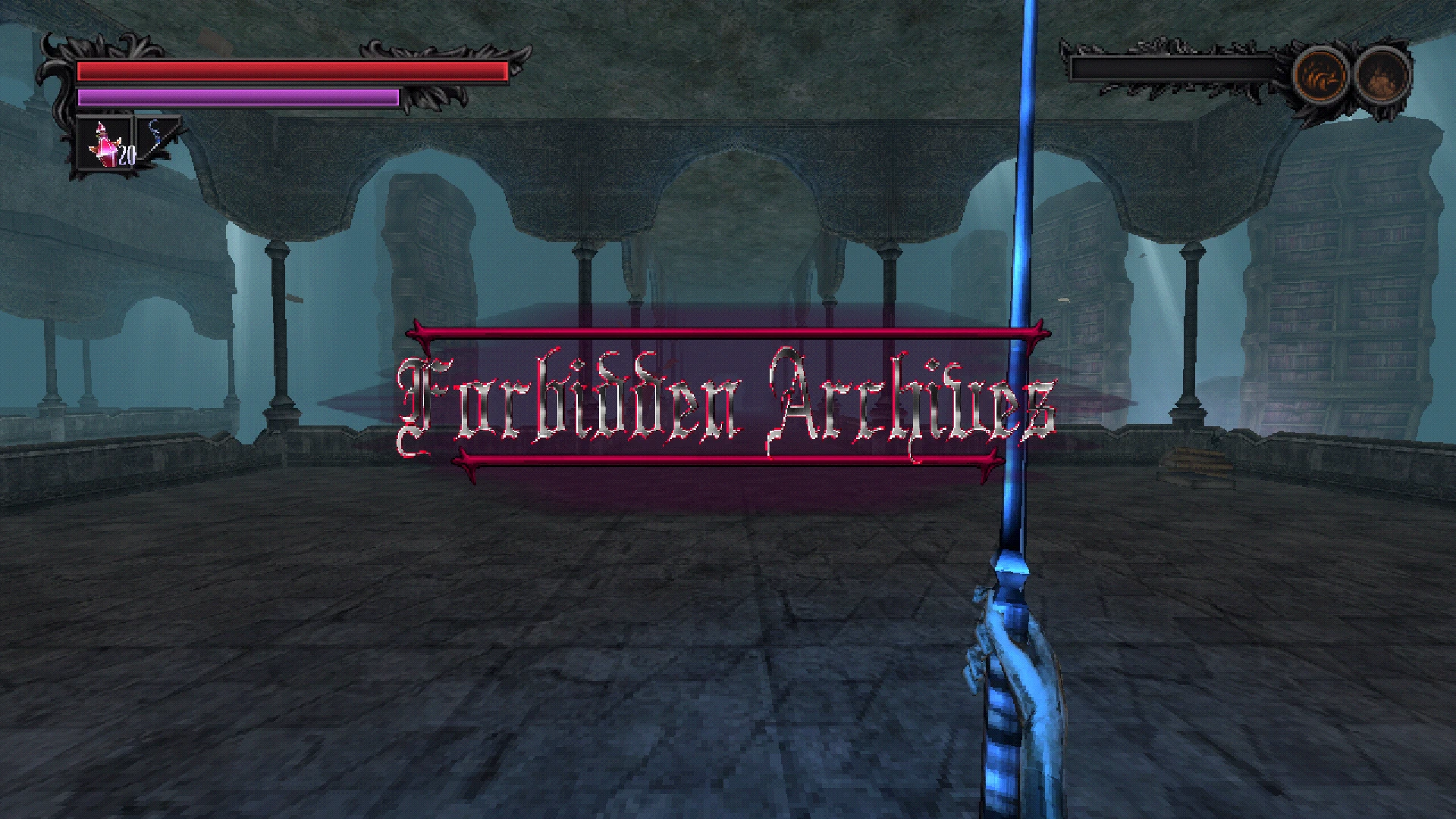
Areas are unique both visually and auditorially.
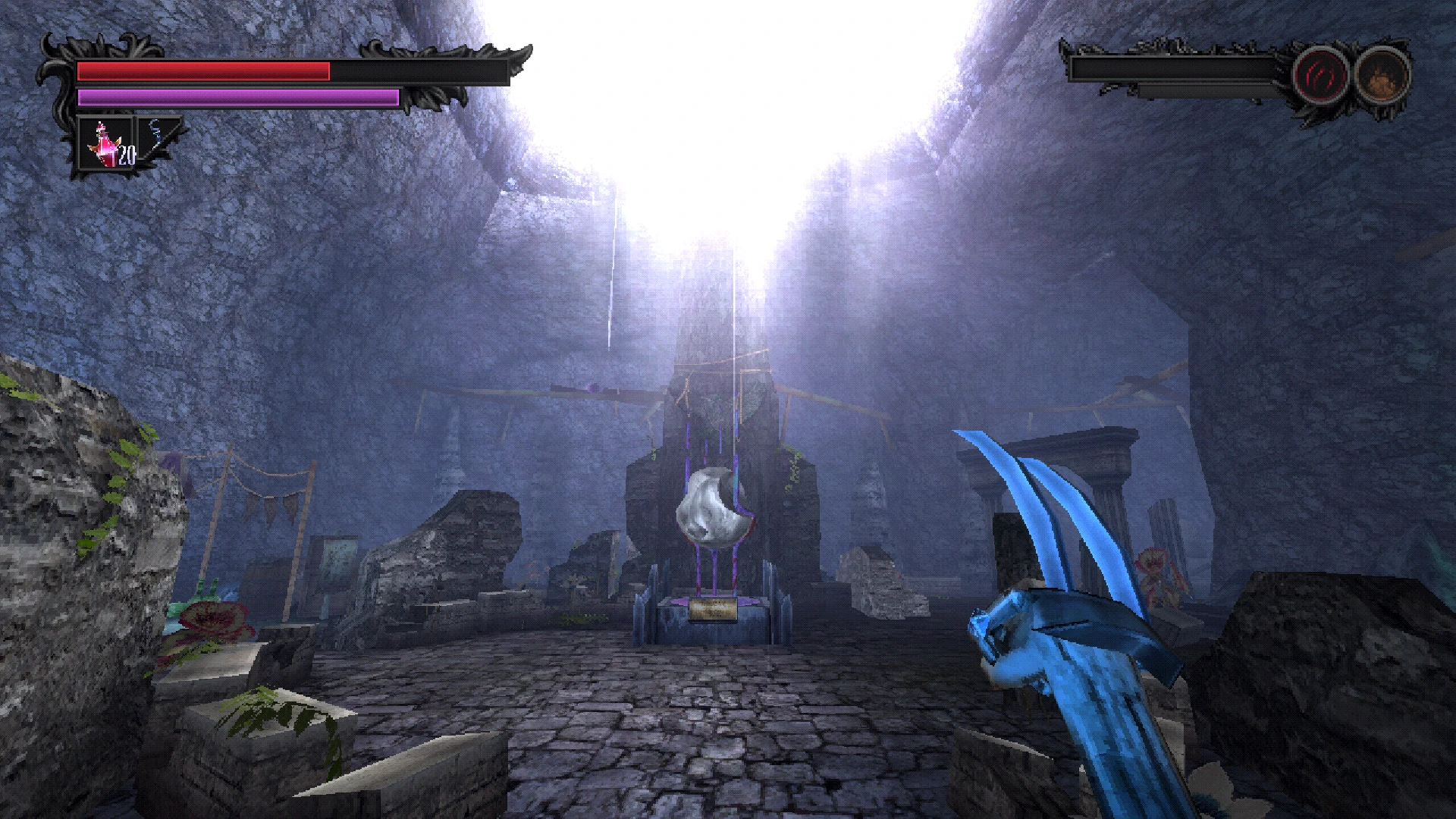
Sometimes the hub theme is spiced up a little when an NPC happens to be playing an instrument too.
Lo-fi is the name of the game when it comes to Lunacid's OST and it's perhaps one of the game's biggest strengths. Every single area in the game has its own very distinct musical theme and usually features and are usually separated into at least two sub-areas each with their own soundtrack. The Accursed Tomb's initial theme "The Smile is Red" already sets an appropriately spooky mood, but descending into the Catacombs and transitioning into the "The Mouth is Wide" escalates the sense of dread, and descending further into the Mausoleum and having the soundtrack cut entirely really nails the atmosphere.
Though the developer Akuma Kira composed quite a lot of the OST themselves, they had a fair few guest composers contribute tracks towards the game, and it's very easy to see just who did what thanks to a delightful little track info display at the bottom left of the screen that credits the composer of the song. "Book Betrayal" by Youtuber ThorHighHeels is a particular favourite guest track of mine, but Jarren Crist, AsterVrisk, and Jeffrey Nordin's contributions are also completely solid.
As for sound effects and sound design in general, it's fine. Sound effects are appropriately retro, most all characters aren't voice acted but speak in Undertale-style streams of sound effects, and the 3 instances of voicework by Robert Belgrade (Alucard from Castlevania: Symphony of the Night) are well-used. Not much more to add here honestly.
Conclusion
So uh yeah, Lunacid is a pretty good game. It's great to see older genres which have suffered neglect in the modern era receive such solid new entries and it's something I always hope to see more of. I think there's a great deal indie devs working on retro-inspired titles can learn from Lunacid, and I certainly hope we see even more from KIRA LLC in the future.





